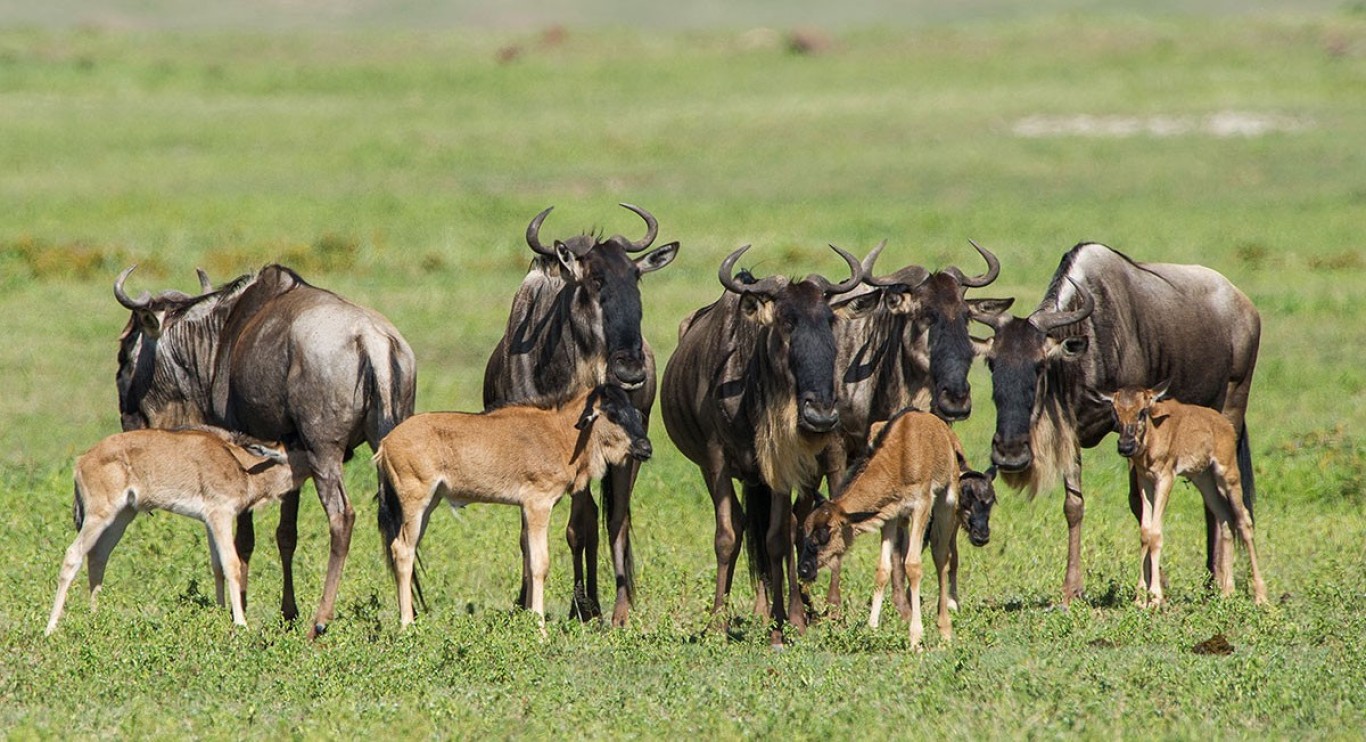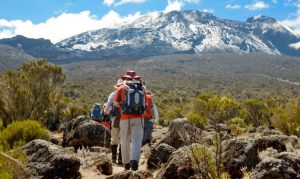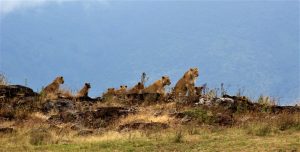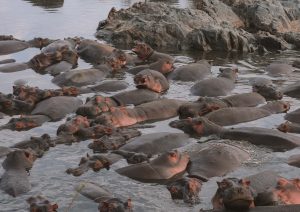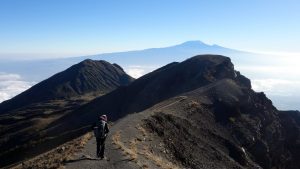Understanding Ndutu Calving Season
The Ndutu calving season is a spectacular wildlife event that takes place in the southern Serengeti and the Ndutu region of Tanzania, typically from late December to March. During this time, the Great Migration sees hundreds of thousands of wildebeest, zebras, and gazelles gather in the nutrient-rich grasslands to give birth. The peak of the calving season occurs in February, when over 8,000 wildebeest calves are born each day.
The Cycle of Life
The natural world operates on a series of cycles, each critical to the survival of species. For various animals, calving season plays an essential role in ensuring the continuation of their lineage. This period is not only about birth; it signifies a time when mothers dedicate themselves to the care and protection of their young. In the African savannah, where the circle of life is constantly in motion, calving season draws particular attention.
As the wildebeest migrate across the Serengeti, they travel vast distances in search of food and water. The journey is arduous, but it leads them to a region that offers the best conditions for calving. As their journey unfolds, the anticipation builds. So, what is calving season? It is the time when female wildebeests give birth, coinciding with the lush green pastures that provide ample nourishment for both mothers and their newborn calves.
Timing and Conditions
The timing of calving season is intricately linked to environmental conditions. In Tanzania, calving typically occurs between late January and early March, coinciding with the rainy season. During this period, the grasslands flourish, creating an ideal setting for newborns to gain strength and energy. The grass becomes not just food for the mothers but also a protective cover for the vulnerable calves.
Understanding what calving season entails means recognizing the significance of timing in the animal kingdom. Many species have evolved to synchronize their reproductive cycles with environmental changes to increase the survival rates of their offspring. For wildebeests, the decision to calve during this specific time is a remarkable adaptation that ensures the best chances for their young to thrive.
The Calving Process
As calving season approaches, mothers seek out safe locations to give birth. Typically, wildebeests prefer open areas where they can spot predators, but they also need the cover of tall grass to hide their calves immediately after birth. This instinctual behavior is crucial, as newborns are incredibly vulnerable in the first few days of their lives.
During calving season, a female wildebeest will often isolate herself from the herd to deliver her calf. This isolation reduces the chance of predation and allows her to focus entirely on the birth process. After a gestation period of approximately seven to eight months, the female will give birth to a single calf. The moment is a delicate balance of instinct and instinctual care; mothers lick their newborns clean, stimulating breathing and circulation.
What is calving season if not a testament to maternal care? The bond between mother and calf begins immediately, with the mother guiding her newborn to stand and nurse. This early bonding is crucial, as it fosters a connection that will last throughout their lives.
The Vulnerability of Newborns
Newborn wildebeests are remarkably unsteady on their legs, often taking their first steps within minutes of birth. This vulnerability makes them easy targets for predators such as lions and hyenas. The first few weeks of life are the most perilous; many calves do not survive due to predation, illness, or the harsh realities of their environment.
During this time, what is calving season becomes a test of survival. Mothers are fiercely protective, often forming small groups with other females to safeguard their young. The sight of a group of mothers and their calves huddled together is both heartwarming and a reminder of the harsh realities of life in the wild.
In addition to predators, calves must also contend with the elements. Rain and cold temperatures can pose significant risks to their health. Mothers must ensure their young are sheltered and protected from the harsh weather, highlighting the importance of maternal instincts during calving season.
Social Dynamics in the Herd
The social structure of wildebeests plays a crucial role during calving season. These animals are known for their strong herd dynamics, which provide safety in numbers. During calving season, the presence of other mothers creates a supportive environment. This social aspect is essential for the overall well-being of both mothers and calves.
Herds often engage in collective vigilance, where multiple mothers watch over their young. This behavior increases the chances of detecting predators early, allowing mothers to react swiftly to threats. In essence, what is calving season transforms into a communal effort to ensure the survival of the next generation.
The bonds formed during this time extend beyond mere survival; they create a network of support among mothers. These relationships can lead to cooperative parenting, where mothers help each other care for their calves, allowing them to forage and rest more effectively.
The Role of Predators
While calving season is a time of new beginnings, it is also a period that attracts predators. The birth of numerous calves draws the attention of lions, hyenas, and other carnivores, all eager to capitalize on the abundance of vulnerable prey. Predators often strategically position themselves near calving grounds, waiting for an opportunity to strike.
Understanding what calving season means in the context of predation is essential. Predators are not merely a threat; they are a natural part of the ecosystem, ensuring that the population remains in balance. The presence of predators influences the behavior of mothers and calves, adding another layer of complexity to the dynamics of this season.
For mothers, the challenge is to protect their calves while still engaging in the necessary foraging. Often, they must make quick decisions about when to leave their young unattended to graze. This balancing act is a critical aspect of calving season, highlighting the constant interplay between safety and sustenance.
The Impact of Climate
Climate change has far-reaching effects on the timing and conditions of calving season. As global temperatures rise and weather patterns shift, the traditional cycles of nature are disrupted. This disruption can lead to changes in the availability of food, water, and suitable calving grounds, posing significant challenges for wildlife.
For instance, if the rainy season arrives later than usual, it may not provide the lush pastures necessary for mothers to sustain themselves and their calves. Understanding what calving season entails in the face of climate change requires a broader perspective on the interconnections between weather patterns, animal behavior, and ecosystem health.
Conservation efforts are increasingly focused on mitigating the impacts of climate change on wildlife. Protecting habitats and ensuring the availability of resources during critical times like calving season is vital for the long-term survival of species that depend on these cycles.
The Journey of Calves
As calving season progresses, calves begin to grow stronger and more mobile. This period is marked by exploration, play, and learning. The young wildebeests gradually become more adept at navigating their environment, engaging in playful behaviors that help develop their strength and coordination.
During this phase, what is calving season transforms into a period of learning and adaptation. Calves observe their mothers, learning essential survival skills such as foraging for food and recognizing potential threats. This early education is vital, as it lays the foundation for their future independence.
As the weeks pass, calves become more integrated into the herd. They start to interact with their peers, forming social bonds that will last throughout their lives. These relationships are crucial for survival, as they create a support network that enhances the chances of successful foraging and evasion of predators.
The Role of Migrations
For many wildebeests, calving season is just one part of a much larger migratory journey. The wildebeest migration is one of the most spectacular wildlife events on the planet, as these animals travel vast distances in search of food and water. The synchronization of calving with migration patterns is a fascinating aspect of their life cycle.
As the herds begin to move again after calving season, mothers must be vigilant. The journey presents new challenges, as calves are still relatively inexperienced and vulnerable. However, this migration is also an opportunity for calves to learn about their environment and develop critical survival skills.
What is calving season if not a pivotal point in the life of a wildebeest? It sets the stage for the challenges and adventures that lie ahead as they continue their journey across the Serengeti. The experiences gained during this season shape the future behavior and survival of both mothers and calves.
The Importance of Conservation
Understanding the significance of calving season extends beyond the animals themselves; it encompasses the broader ecosystem and the need for conservation efforts. Protecting habitats and ensuring that wildlife can thrive during critical periods like calving season is essential for maintaining biodiversity.
Conservation initiatives focused on preserving calving grounds help safeguard the future of species that rely on this annual event. By maintaining healthy ecosystems, we contribute to the well-being of not only wildebeests but also countless other species that share their habitat.
What is calving season if not a reminder of the interconnectedness of all living things? The survival of one species often hinges on the health of its environment and the relationships it forms with others. This understanding underscores the importance of conservation efforts that prioritize habitat protection and sustainable practices.
The Beauty of New Life
As calving season comes to a close, the landscape transforms once again. The sight of countless healthy calves grazing alongside their mothers is a testament to the resilience of nature. This annual event reminds us of the delicate balance between life and death, survival and vulnerability.
Witnessing calving season in action is an awe-inspiring experience, filled with moments of joy and sadness. It serves as a reminder of the power of nature and the intricate relationships that exist within ecosystems. For those fortunate enough to observe this phenomenon, it becomes a cherished memory, a connection to the natural world that is both profound and humbling.
In Summary
In conclusion, calving season is a pivotal time in the lives of wildebeests and many other species. It represents the beginning of a new cycle, filled with hope, challenges, and the promise of life. From the delicate process of giving birth to the social dynamics of herds, what is calving season encompasses a rich tapestry of experiences that illustrate the resilience of nature.
Understanding the intricacies of calving season allows us to appreciate the beauty and complexity of the natural world. It emphasizes the need for conservation efforts to protect the habitats that sustain these animals and ensures that future generations can witness the remarkable spectacle of new life in the wild.
As we reflect on the significance of this season, we are reminded of our role in safeguarding the environment and the creatures that inhabit it. The stories of mothers and their calves during calving season serve as a powerful testament to the enduring spirit of life and the interconnectedness of all living beings.

